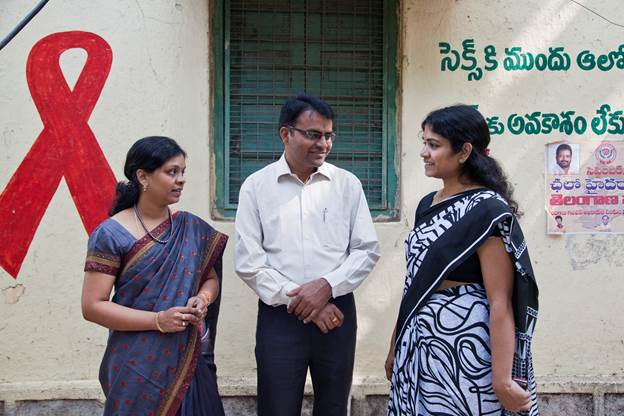Can a Polio-free India Lead to an HIV-free India?

This article was originally posted on The Lancet Global Health Blog.
India—once considered the most challenging place on earth to end polio—is now on the verge of announcing the disease’s eradication. It has been more than three years since the last case of polio was reported and the World Health Organization (WHO) is expected to officially declare India polio-free later this year. Its rapid success can be attributed to the Indian government and public policy leaders who made polio eradication a national priority.
This news brings fresh hope that we can also conquer another serious public health threat in India—pediatric HIV. Both polio and HIV/AIDS significantly impact children and, with the right measures in place, both diseases can be prevented.
HIV/AIDS in India
Like polio, HIV infection in children is often more severe than in adults. HIV-positive children suffer from more pronounced symptoms, including respiratory infections, sepsis, intestinal illness, skin disease, and meningitis. More than 145,000 children in India are currently living with HIV, most of whom contracted the virus from their mothers during pregnancy, childbirth, or breastfeeding.
Without medication, more than 80 percent of children worldwide living with HIV will die before the age of five . Sadly, only one third of these HIV-positive children currently have access to the antiretroviral therapy (ART) that will allow them to remain healthy and survive to adulthood.
Prevention of mother-to-child transmission of HIV (PMTCT) services can protect babies from being infected with HIV. An HIV-positive woman can take medication that will prevent her from passing the virus on to her baby and support her own health. However, in India only 30 percent of HIV-positive pregnant women currently have access to lifesaving PMTCT services. This low coverage remains despite the Indian governments substantial scale-up efforts at more than 12,000 HIV counseling and testing centers. Indian’s large population coupled with its vast geography continue make testing and identifying the estimated 38,000 pregnant women living with HIV in India a challenge.
Lessons Learned
India fought polio on several fronts, with the strong commitment of the government, partnerships with non-governmental organizations such as the Global Polio Eradication Initiative, and the massive on-the-ground efforts from health workers who administered vaccines, educated the community about the importance of getting children vaccinated, and rallied social support for the mission to end polio. The continued commitment of India’s government and its partnerships with international organizations is also crucial to ending the HIV epidemic.
Similar to the misconceptions and stigma associated with HIV testing and treatment that we currently face, many families in India didn’t trust vaccinators and didn’t understand the link between other public health initiatives and mission to end polio. In response health workers changed their approach—polio vaccines were integrated into water and sanitation and other health care initiatives.
We can do the same for HIV, not just in India, but worldwide. Taking a lesson from India and adapting our approaches to meet the cultural and societal needs of community, in addition to the health care needs, will be key to our success. The government is already working to integrate HIV testing, treatment, and PMTCT services into the current system.
The Elizabeth Glaser Pediatric AIDS Foundation (EGPAF) and its partner, Solidarity and Action Against the HIV Infection in India (SAATHII), are collaborating with the Indian government to access unreached populations and integrate HIV services with maternal and child health programs at private and faith-based hospitals. To date, the Indian government has tested approximately 8.8 million pregnant women for HIV and engaged with nearly 170 community-based agencies along with health workers and outreach organizers to improve follow-up with mother-baby pairs and reach those who are unable to access health facilities.
India’s successful campaign to end polio shows that it has the capacity, expertise, and infrastructure to conquer the HIV/AIDS epidemic. By expanding its partnerships with the private sector and international organizations, and accelerating efforts to implement public policies to treat and prevent HIV, India has the opportunity to serve as a global example of how, with high-level commitment and an integrated public health approach, an AIDS-free future is possible.
Learn more about EGPAF’s work in India.
Christian Pitter, M.D. is the senior director of global technical policy and partnerships at EGPAF.
Christian Pitter
General


